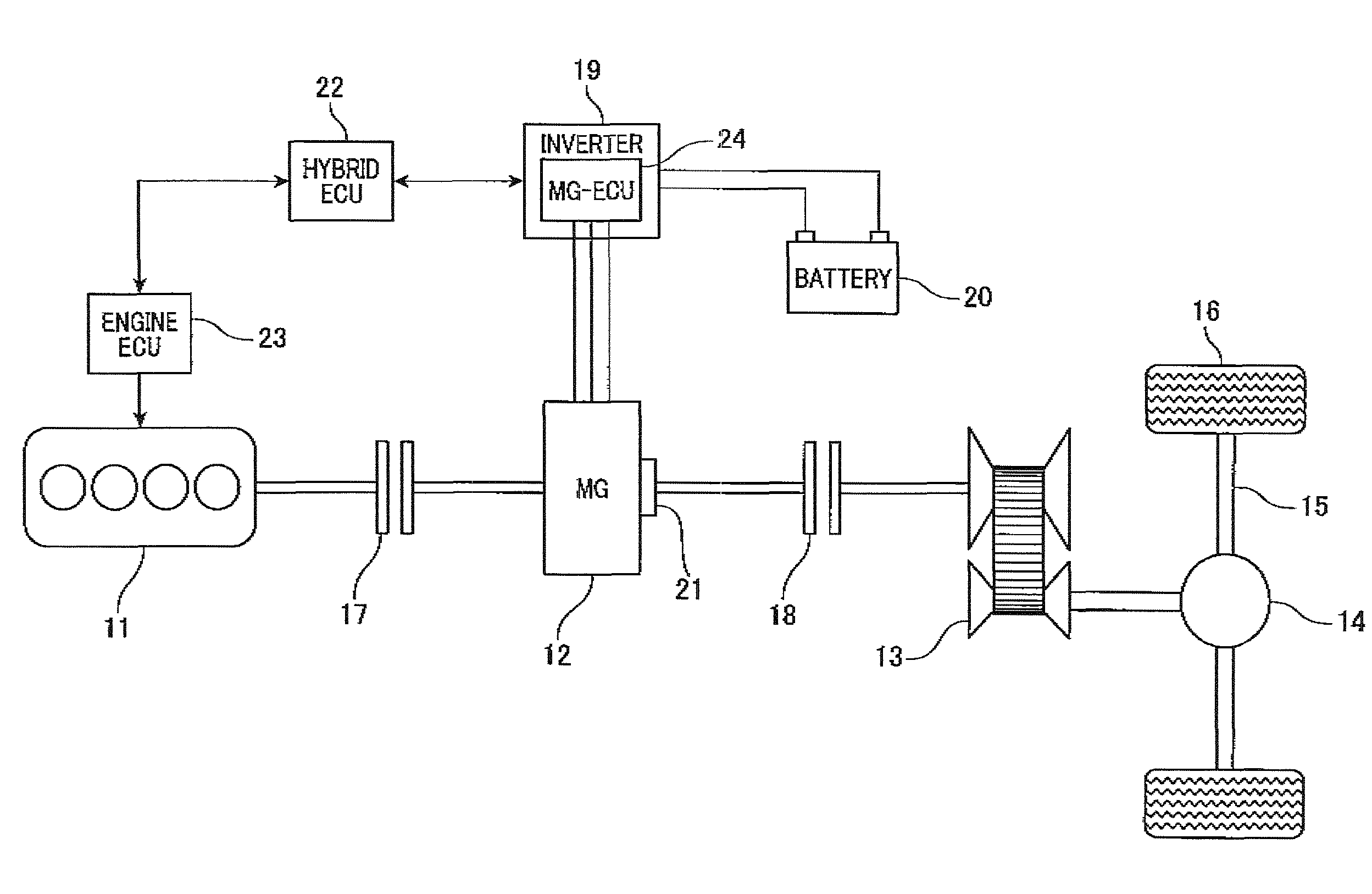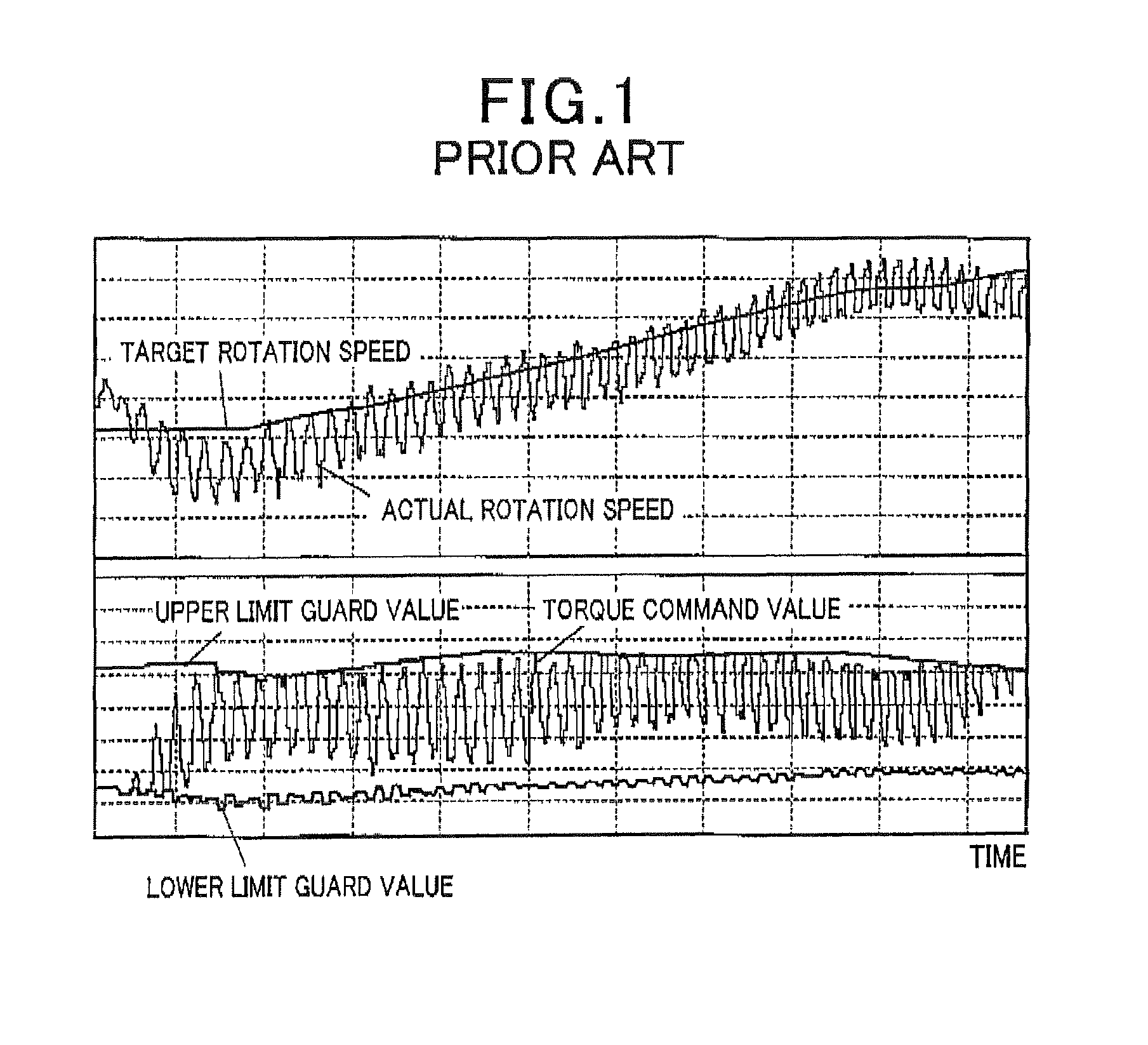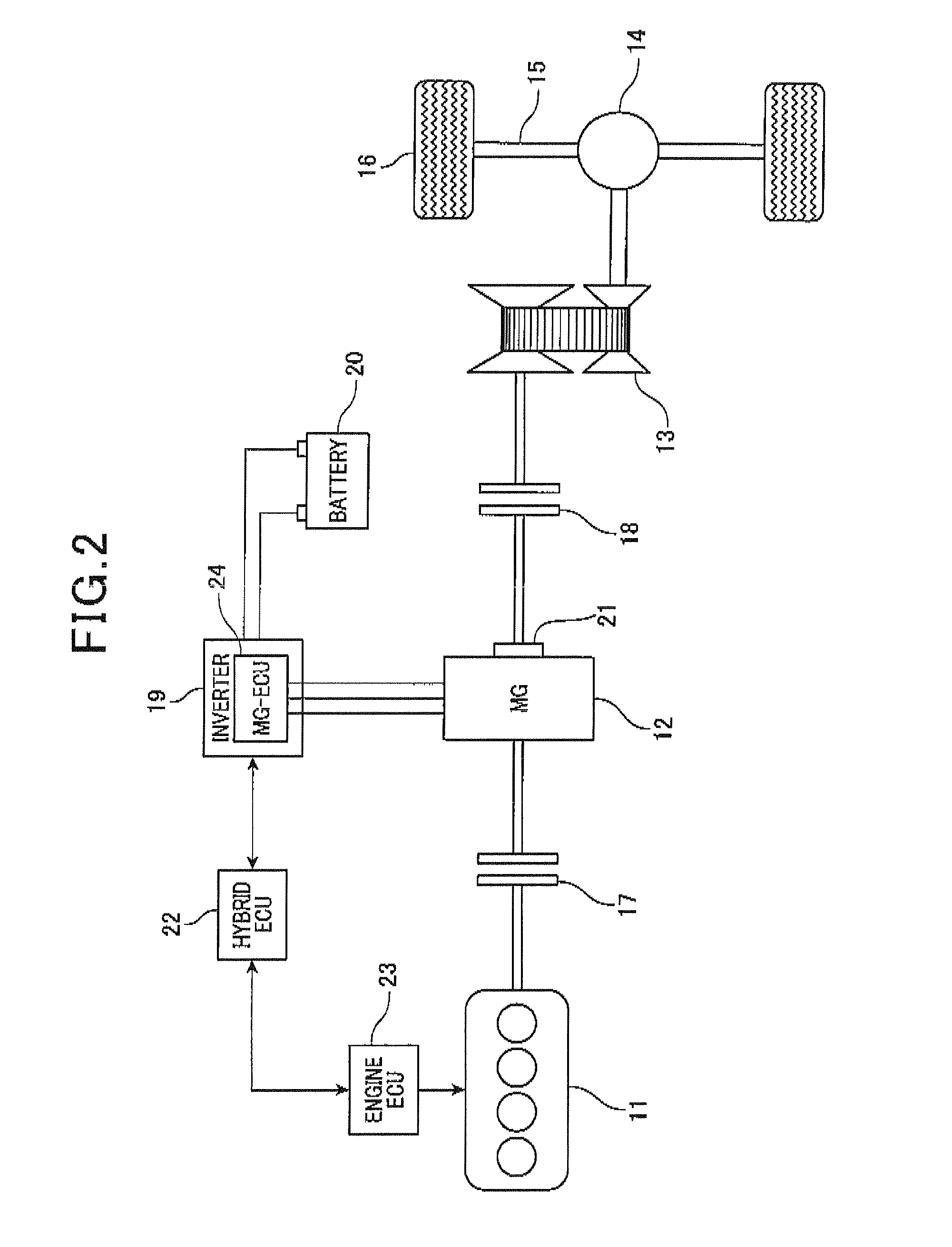Motor control apparatus for hybrid vehicles
a technology of motor control and hybrid vehicles, which is applied in the direction of hybrid vehicles, process and machine control, instruments, etc., can solve the problems of reducing gain, affecting responsiveness, and instability of motor torque, so as to ensure responsiveness, reduce deviation, and stabilize the torque of the motor
- Summary
- Abstract
- Description
- Claims
- Application Information
AI Technical Summary
Benefits of technology
Problems solved by technology
Method used
Image
Examples
first embodiment
[0020][First Embodiment]
[0021]Referring to FIGS. 2 to 5, a first embodiment of the present invention is described.
[0022]FIG. 2 is a schematic diagram illustrating a drive system of a hybrid vehicle, according to the first embodiment. As shown in FIG. 2, the drive system includes an engine 11 that is an internal combustion engine and a motor-generator (hereinafter is referred to as “MG”) 12 as motive power sources of the vehicle. The motive power of an output shaft (crank shaft) of the engine11 is transmitted to a transmission 13 via the MG 12. Then, the motive power of an output shaft of the transmission 13 is transmitted to wheels 16 via a differential gear mechanism 14, an axle shaft 15 and the like. The transmission 13 may be a step transmission in which a gear range is changed stepwise among a plurality of gear ranges, or may be a CVT (continuously variable transmission) in which a gear range is changed in a stepless manner.
[0023]The engine 11 and the transmission 13, which conf...
second embodiment
[0053][Second Embodiment]
[0054]Referring now to FIG. 6, hereinafter is described a second embodiment of the present invention. In the second embodiment, the components identical with or similar to those in the first embodiment are given the same reference numerals for the sake of omitting unnecessary explanation. The following description is given focusing on the differences from the first embodiment.
[0055]When the first clutch 17 is in a disconnected state, the rotation fluctuation of the MG 12 due to the rotation fluctuation of the engine 11 does not occur. Therefore, torque of the MG 12 can be stabilized by only tuning PI control, while responsiveness of the motor rotation speed control is ensured (i.e. no torque correction value is required).
[0056]In light of this, in the second embodiment, the MG-ECU 24 performs a motor rotation speed control routine shown in FIG. 6, which will be specifically described later. In this routine, the torque correction value Tj is calculated when t...
PUM
 Login to View More
Login to View More Abstract
Description
Claims
Application Information
 Login to View More
Login to View More - R&D
- Intellectual Property
- Life Sciences
- Materials
- Tech Scout
- Unparalleled Data Quality
- Higher Quality Content
- 60% Fewer Hallucinations
Browse by: Latest US Patents, China's latest patents, Technical Efficacy Thesaurus, Application Domain, Technology Topic, Popular Technical Reports.
© 2025 PatSnap. All rights reserved.Legal|Privacy policy|Modern Slavery Act Transparency Statement|Sitemap|About US| Contact US: help@patsnap.com



